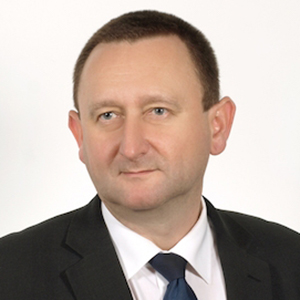Politechnika Warszawska

dr hab. inż. Paweł Popielski, prof. PW, Politechnika Warszawska
Warsaw University of Technology professor, hydrotechnician. A graduate of the Warsaw University of Technology in the hydrotechnical construction speciality. From 2014, head of the Water Construction and Hydraulics Department, until 2016 director of the Center for Geo and Hydrotechnical Analysis, Institute of Applied Research PW. Professionally working on: application of advanced numerical simulations in the following problems: geotechnics, hydrotechnics and environmental engineering; assessment of the technical condition of the facilities based on the monitoring and compliance of the measurement data with the results of mathematical modeling; analysis of the impact of deep foundations on building structures and groundwater in the urbanized environment and setting limit values for monitoring; verification of parameters adopted in mathematical modeling; using modern measurement methods (e.g. laser scanning, thermomonitoring) to generate data and verify the results of mathematical modeling; taking into account in the calculations and analysis regarding the safety of building structures, changes in groundwater relations and phenomena occurring in the ground, caused by filtering water (erosion, suffosion, colmatization). Co-organizer and performer of the first leak tightness measurements in Poland using the thermomonitoring method.
The use of fiber optic monitoring for diagnosing and assessing the condition of a large-diameter sewage system
Diagnostics and evaluation of the technical condition of collectors requires conducting multi-criteria, complex analyses (often exceeding the standard recommendations) and using modern construction measurement techniques, increasing the safety of their operation. The paper will present experiences based on the assessment of the technical condition of a large-diameter sewage collector after several decades of operation. The issues of methods of diagnosing the causes of operational problems by means of modern measurement techniques and numerical models reflecting local geotechnical conditions and existing infrastructure will be discussed.



